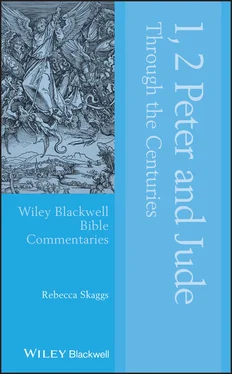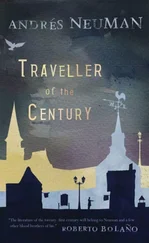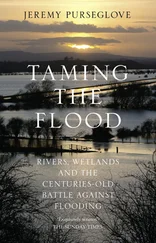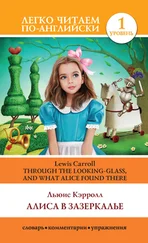In our Chapter 1(1 Peter 1–2:12), he provides three special metaphors of the holy life for the individual as well as the community – grass, milk, and living stones.
In Chapter 2, Peter applies these concepts to three particular cultural situations of his time – the government, slavery, and marriage. His words on these issues have influenced and shaped theology, society, culture, the arts, and even relationships through the centuries.
Chapter 3includes a special passage (3:18–22: “Christ’s visit to the spirits in prison”), which has not only been extremely controversial theologically, but has notable effects in culture, literature, and art. It is particularly important since it has led to several interpretations of the doctrine of the descent of Christ into Hades. Also, although it began as an emphasis on the work of Christ by the Resurrection, it expanded into the tradition of the harrowing of hell, which has affected literature, music, drama, culture, and especially art. A consideration of its reception in art especially sheds light on the development of this concept and leads to a greater appreciation for the effect and message of 1 Peter.
Chapter 4is perhaps one of the most extensive passages on suffering in the New Testament – how one should respond to it personally, and how it comprises a component of the transformed life. The aspect of suffering as a Christian versus suffering in general is also considered.
In Chapter 5, Peter revisits the main themes of the epistle and applies them to the leaders in the church. He concludes with information about his location and authorship along with his signature doxology.
Probably written before 2 Peter (see Appendix 1for details), this epistle is a literary masterpiece of vibrant imagery, organized in several sets of three (see Neyrey, 1993, “Introduction” for details). In Chapter 6, these are comprised of several series of examples arguing that God will indeed punish the wicked and rescue the righteous. Jude is also unique in that he uses several examples from the apocrypha (the fallen angels and a prophecy from Enoch, and the dispute between Michael and Satan over Moses’ body from the lost Assumption of Moses ). Jude concludes his epistle with exhortations to the faithful about how to respond in a wicked environment. A major issue of Jude is its relation to the Book of Enoch, particularly on the topic of the fallen angels, so this is addressed more fully in Chapter 7, “Excursus: Enoch’s Role in the Reception of Jude.”
Jude and 2 Peter are usually treated together since they share a chunk of material: nearly the entire epistle of Jude is included in 2 Peter 2. This raises the questions of why and how this is and what does it mean for the purpose and nature of both epistles. It will be noted as we proceed that each epistle is distinctive in terms of issues as well as reception history. (See also Appendix 4for reception history of Enoch.)
Chapter 8(2 Peter 1) includes significant issues such as the basis for certainty about the Parousia, participation in the Divine nature, the inspiration of scripture, and the nature of prophecy.
Chapter 9(2 Peter 2) is the material which overlaps with Jude. Noteworthy differences from Jude include: 2 Peter omits Jude’s direct references to the apocrypha, for example the dispute between Michael and Satan over Moses (v.9) and the citation of Enoch (v.14), although he does include the prophecy itself. It should be noted that Peter explains that the false teachers were prophesied beforehand by the prophets.
Chapter 10(2 Peter 3) treats important issues, some of which are unique to the New Testament. For example, the final conflagration at the end of time and the reasons for Christ’s delay in returning.
Chapter 11treats the delay of the Parousia. The similarity between Jude and 2 Peter has been debated by both ancient and modern scholars with various conclusions but almost everyone agrees that 2 Peter’s discussion of the delay of the Parousia and the coming final judgment by fire is unique to him. An exploration into this shows that the issue was raised at an early time in the church and has continued to shape theological discussions through the ensuing centuries.
Aims and Methods of this Commentary
The approach of this commentary series is rooted in the work of Hans‐Georg Gadamer and others such as Hans Robert Jauss (1982), and suggests that some kind of “dialogue between past and present,” some “fusing of horizons,” might be possible by considering the “horizons of expectations”; that is, by exploring how the readings vary from one historical period to another, from one interpretive community to another. Jauss puts it like this: “A literary work is not an object which stands by itself and which offers the same face to each reader in each period” (cited by Callaway, 2004: 4). In fact, the meaning is not in the text itself but is “produced by readers who engage texts.” Gadamer emphasizes the point that the reader is not a passive recipient of the text, but rather creatively interacts with it, in a dialogical relationship. In this way, the reader is inherently involved in constructing the meaning. Integral to this approach is not only that the text is located within a particular historical context but, beyond that, each reader is culturally and politically situated so that even we who are exploring reception history are being influenced by our personal backgrounds as we select and handle the materials. The important point is that the reception historian must be constantly aware of this.
According to Luz, there is a critical distinction between the history of interpretation and the history of influence; they are intrinsically related to each other (cf. Thiselton, 2011: 6). Of course, the starting point is to take into account the various readings of a text, but it is equally or more important to consider the “effect” of a text, that is, how the text has shaped its particular world. This involves the exploration of the dialogs and interactions between readings in a specific era but also how succeeding dialogs participate in the development of very different communities from those of its own time. In relation to our little text of 1 Peter, several kernels or seeds embedded within 1 Peter would lead to major controversies from which significant doctrines emerged. For example, 1:2–3 refers to God’s foreknowledge, which almost immediately initiated discussion and debate among early writers about free will and election. This discussion would grow in intensity (along with the discussions on the Pauline epistles) until currently these theories differentiate various current denominations. In other cases such as the sections on slavery (2:18–25) or roles in marriage (3:1–7), entire movements and counter‐movements have developed, shaping culture, theology, and society. 2 Peter 1:20–21 (along with Pauline parallels) has shaped one of the central doctrines on the inspiration of scripture. The point is that reception historians are interested not only in how various readers have read and interpreted the text, they are also interested in the effects the text has on its readers and their communities. The concept is that what a text does is as important and meaningful as what it means . Riches (2013: 6) explains that this means taking “account of the power of a work to shape its readers, to create a new readership, new in the sense that its sensibilities, its understanding of the world and society and of individual lives as located in society … have been informed and re‐formed by their reading of the work.”
In other words, a written work does not merely reflect or imitate the world from which it came but also is itself engaged in the shaping of that world. Luz (1989: 95) calls this the “history of influence” of a text and explains that it goes beyond the task of the history of interpretation by the consideration of its use in practice, singing, praying, and even hoping and suffering. Studies such as those by Exum (2007) and Sherwood (2000) have shown the significant contribution which results from considering the effects and “afterlives” of a text.
Читать дальше












